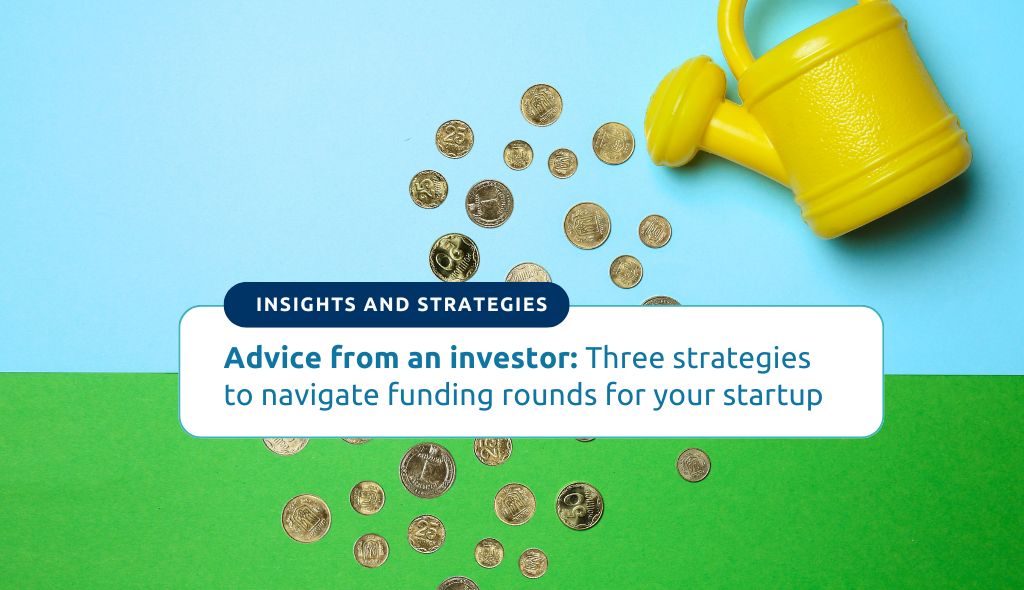Understand how to fundraise in the current economic environment as an early-stage start-up
It’s exhilarating to start your own venture. You’ve been pouring in time, energy, and even your own money, and you are hoping it all pays off. And just maybe, you have something truly disruptive and will be the next ‘Unicorn’ – not the mythical creature of course, but a private business valued at over $1 Billion.
Unfortunately, the reality is that only an average of about 100 unicorns emerge worldwide per year. With millions of start-ups in North America alone, making it to a billion-dollar valuation sounds daunting. When you also consider the current economy, it’s getting especially challenging for entrepreneurs to sustain themselves. However, this doesn’t mean that you should give up on your dream.
We turned to David W. Wright, Expert Advisor at Innovation Factory (iF), founder of Cassio Capital Advisors, and former Executive Director at the Angel One Network, to share some insights on how early-stage start-ups can navigate the fundraising market. As an Expert Advisor at iF, Wright works one-on-one with innovators to help them prepare for investment and scale their business.
Strategy 1: Follow the staircase model to understand how to leverage investors
Be informed about who you’re seeking out as investors and, most importantly, when you’re going to leverage them. While everyone wants to go for venture capital (VC) investment, you have to ask yourself the question, ‘Is it right for my start-up?’
First, for the purposes of understanding these strategies, let’s briefly review four types of private investors:
- Family and friends: investments made by people from a founder’s personal network.
- Sweat equity: a non-monetary investment of resources that helps with the growth of a start-up. Supporters that provide significant services to the company (as an employee or consultant) for no pay may request to be rewarded with equity instead of cash; hence the term, sweat equity.
- Angel investors: accredited investors who are looking to invest their own net worth into a small business for equity.
- Venture capitalists: professional investors who invest on behalf of an investment fund to gain equity in a high-growth business. Going after venture capital makes sense once the business has grown to the scale and with high growth potential prospects that it requires significant external capital to do so.
Wright explains, “Early-stage companies are going to find it challenging to raise money from VCs. They should start with bringing in any “friends and family” investment possible before turning to angel investors to really start to grow their business. Backed by some angel equity, founders may then find more success going after venture capital dollars – following a ‘staircase model’.”
Identifying what type of funding is best for your business can certainly be challenging. Innovation Factory’s Venture Growth and Expert Advisors can talk to you about the different types of funding available, help identify what may be best for your business and coach you on how to gain access to them.
Strategy 2: Develop an understanding of how interest rates may affect funding opportunities
You might be familiar with the ‘dot-com bubble’. It was a period of significant stock market growth in the early 2000s that was primarily fueled by the large-scale adoption of the Internet. Interest rates were low and VCs were performing exceptionally well, resulting in a high volume of profitable exits. Some of those exits are still household names, like Amazon and eBay. If you’re interested in taking a deeper look at over 30 years of economic effects on VC performance, a study by Stéphane Koch called ‘The risk and return of venture capital,’ goes into further detail on the topic.
The point is, venture funds (both in quantity and cheque size) tend to be more readily available when the market experiences low interest rates. In times of rising and higher-than-average interest rates, like right now, there is a greater ‘opportunity cost’ to investing in ventures without an expected short-term return. So, attracting any investors, including angels and VCs, becomes increasingly challenging.
During these economic slow-downs, Wright recommends that start-ups should focus on being cash flow positive. It is great to be ambitious and driven, but the bottom line is that growth requires capital. If you can’t count on being able to raise external funds, the other option is to generate funds internally, until external funds become available to you. This may mean you have to make the strategic choice to grow your company more gradually, or purposefully.
Let’s look at a hypothetical scenario. The investment climate is not doing so well. Interest rates are higher than average. Investors are less enthusiastic about investing. Sounds familiar? In this hypothetical situation, if you were presented with the following two choices to expand your business, which one would you choose?
- You go all in and pursue both the North American and the European market expansion, or
- Grow your company in the North American market and THEN take the company to further scale in Europe.
While there is no right or wrong answer, there is a more realistic choice to pick. Wright suggests that you try to avoid a common early-stage mistake of targeting multiple markets — it can be inefficient, and more financially demanding.
“I have often seen companies go after too many opportunities,” Wright says. “They think of approaching clients in different industries, but the customers are totally different, often with different needs, different distribution channels and they aren’t referencing each other. Each market segment requires different marketing support. And as such, each new market may require a significant investment in time, effort and money. You are better off capitalizing on one segment at a time. Get it to the point of it starting to generate excess cash. Then use this cash to invest in the next segment. Essentially, you fund each segment incrementally. In the end, being cash flow positive and staging the growth mitigates the risk is the ultimate goal.”
In such a challenging economic and investment climate, you need to find every advantage for your business. Working with a business accelerator, you can engage expert mentors, like Wright to help determine what market, growth plans, and exit strategies are best for your business.
Strategy 3: Prepare a thorough market strategy, keeping the next 5 years in mind
Gaining investor trust in your business is key to securing funds. Wright advises that one way of doing that is by creating a well-planned five-year market strategy. Having a plan for the long haul demonstrates confidence in the tech, its ability to thrive in the market and your ability to help it get there. Include plans for additional product lines and a continued growth strategy.
While you’re already planning, be sure to outline an exit strategy. Determine who you might sell your venture to and scope out how you plan to approach each prospective buyer over time.
Now before you can get an investor to review your plans and financials, you will also need a compelling pitch. Wright adds, “It’s really important you can answer specific questions like, what makes you unique, who are you targeting, how big is the market opportunity, and what’s your exit plan?” These types of questions will help you recognize any potential gaps in your business strategy and will help you work to solidify those areas.
It’s more than funding
Finally, it is important to remember that you are not alone. As an entrepreneur you may feel like you’re all by yourself, but it doesn’t always have to be that way. In fact, doing it all on your own may even impact your success.
A recent Innovation, Science and Economic Development Canada study shows that companies that received support from an accelerator experienced an additional 12% growth in revenue and an additional 13% growth in employment compared to companies that did not.
Getting the guidance you need from a business accelerator like Innovation Factory can make entrepreneurship easier. You can access a range of resources and services and get support with identifying funding, developing your business strategy, and more.
If you’re an innovator looking to access our bank of resources, apply to become a client today!







